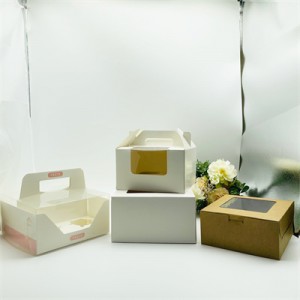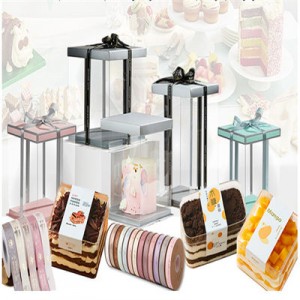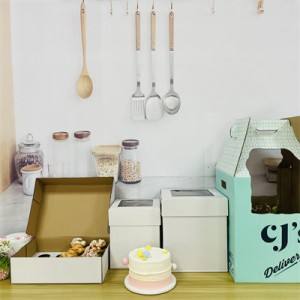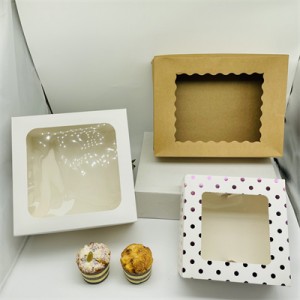A bakery box is a container used to package and protect bread. This box helps preserve the freshness of the bread and protects it from the outside environment. bakery boxes can be made from a variety of materials, including paper, plastic, and other composite materials. They can be very diverse in design, often having a square or rectangular shape.
Bakery box functions
Freshness preservation function:
One of the most basic functions of a bakery box is to preserve freshness. Bread is a food that is susceptible to the external environment and is vulnerable to air, moisture and bacteria. By providing a closed environment, the bakery box effectively isolates the negative influence of the outside world on the bread. This helps extend the shelf life of the bread, ensuring consumers can still enjoy fresh and delicious bread after purchase.
Moisture-proof function
In addition to keeping fresh, bakery boxes can also effectively prevent moisture. Moisture is one of the main factors that causes bread to become soggy and stale. The design of the bakery box uses moisture-proof materials or barriers to effectively isolate external moisture and ensure that the bread remains soft and delicious. This is essential when storing or transporting bread in humid climates, ensuring the quality and taste of the product.
Convenience features
Bakery boxes not only provide freshness and moisture-proofing, but also provide consumers with great convenience. Its structural design is usually simple and compact, making it easy to carry. Consumers can easily put the bread into the bakery box without worrying about the bread being squeezed or damaged during transportation. This is great for taking bread with you on the go, on picnics, or for workday lunches.
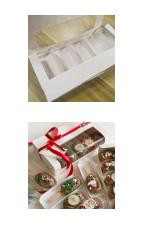
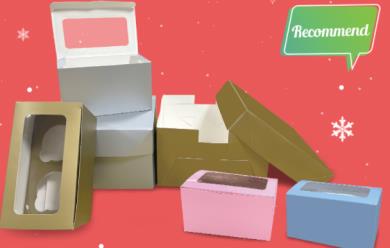
Environmental orientation
Some bakery boxes are made from recyclable materials and are environmentally friendly. This design helps reduce the burden on the environment and is in line with modern society's increasing concern for sustainable development and environmental protection. By choosing eco-friendly bakery boxes, consumers can contribute to reducing plastic pollution and resource waste.
Innovative design
As consumer demands continue to evolve, some bakery boxes have enhanced product appeal through innovative designs. The clever use of elements such as brand logo, product information and attractive patterns makes the bakery box not only a packaging tool, but also a display of the added value of the product and the brand image.
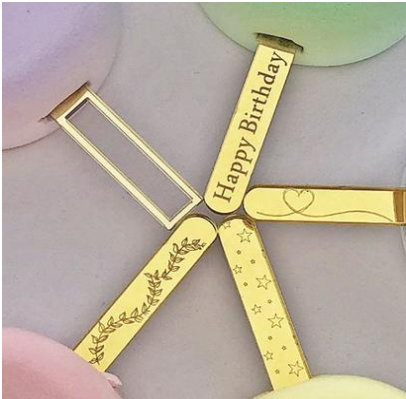
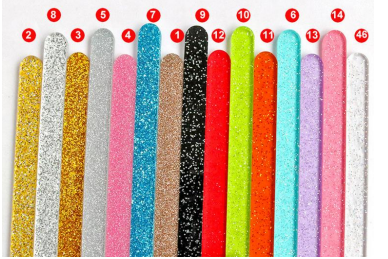
2Types of bakery boxes
As a type of food packaging, bakery boxes show a variety of designs and material choices. Different types of bakery boxes have their own characteristics in structure, material and use, meeting the different needs of the market and consumers. Below I’ll dive into the various types of bakery boxes, focusing on the three main categories of paper, plastic, and composite materials to reveal their unique role in bread packaging.
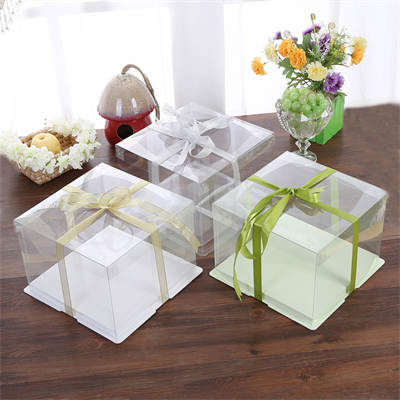
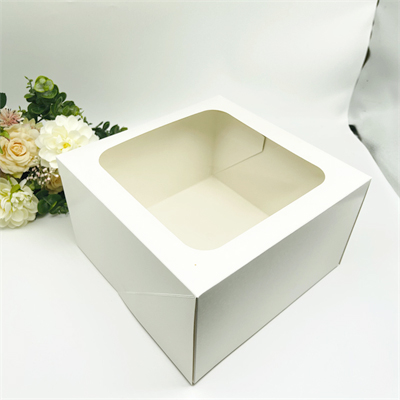
Paper bakery box
Paper bakery boxes are the most common and popular type. Typically made from cardboard or corrugated paper, this type of bakery box is lightweight and environmentally friendly. Paper bakery boxes can provide basic protection while making the product more natural and friendly in packaging. Its materials are highly recyclable and in line with contemporary pursuit of environmental protection.
Plastic bakery box
Plastic bakery boxes focus on a higher degree of protection. Due to the superior resistance of plastic to moisture and pressure, this type of bakery box better protects the bread from the outside environment. However, as concerns about the environmental friendliness of plastic packaging increase, some consumers have raised concerns about this type of bakery box. Therefore, manufacturers are working hard to develop sustainable and environmentally friendly plastic alternative materials to balance protective performance and environmental protection.
Composite bakery box
To combine the advantages of paper and plastic, some bakery boxes use composite materials. This type of bakery box combines the environmentally friendly features of paper with the protective properties of plastic. Composite bakery boxes often incorporate different materials in their layered construction for better functionality. This innovative design provides more comprehensive protection for bread and opens up more packaging possibilities.
Bakery box shape
The shape of bakery boxes can vary depending on the manufacturer, product type and market demand, but generally speaking, they mainly come in the following common shapes.
- 1.Square bakery box:
This is one of the most common shapes. Square bakery boxes typically have a simple cubic or rectangular design, providing a basic packaging structure for convenient placement of various types and sizes of bread.
- 2.Rectangular bakery box: Similar to the square bakery box, the rectangular bakery box is also a common shape. They may be longer or narrower than square boxes to accommodate different shapes of bread.
- 3.Oval bakery box:
Some bakery boxes have an oval shape, making the packaging more unique. This shape may be more attractive in design and make the product stand out more on the shelf.
- 4.Round bakery box:
Although rarer, round bakery boxes may be used for certain types of bread. This shape can provide unique packaging for special flavors or branded products.
- 5.Polygonal bakery box:
Sometimes designers may choose to use polygonal shapes, such as hexagons or octagons, to give the bakery box a unique look.
- 6.Special shape bakery box:
Some brands may use special styling to highlight their uniqueness and brand image. This may include irregular shapes, innovative structures or designs related to product characteristics.
- 7.Folding bakery box:
Some bakery box designs have a folding structure that allows them to be adjusted to the size of the loaf. This design saves space and provides flexibility.
The choice of these shapes often depends on the type of bread, packaging needs and the brand's design philosophy. With the continuous innovation of packaging technology, more unique and complex shapes may appear to meet the diverse needs of the market.
In conclusion
As an important form of food packaging, bakery boxes play a key role in preservation, packaging and display. As environmental concerns continue to increase, bakery box materials and designs continue to innovate. Consumers can enjoy delicious bread while being environmentally responsible by choosing a bakery box that suits their needs.
Post time: Jan-19-2024

